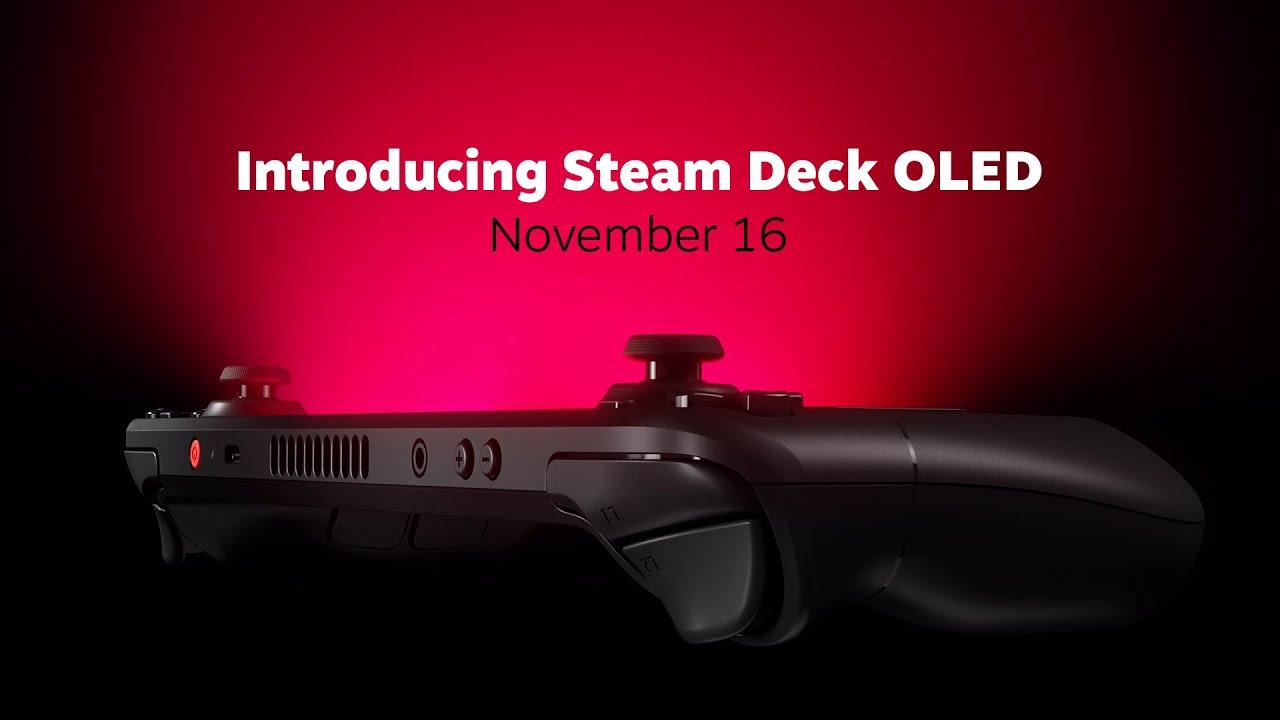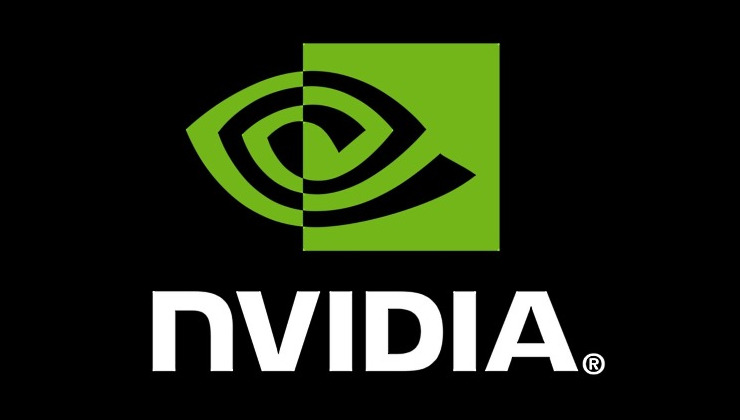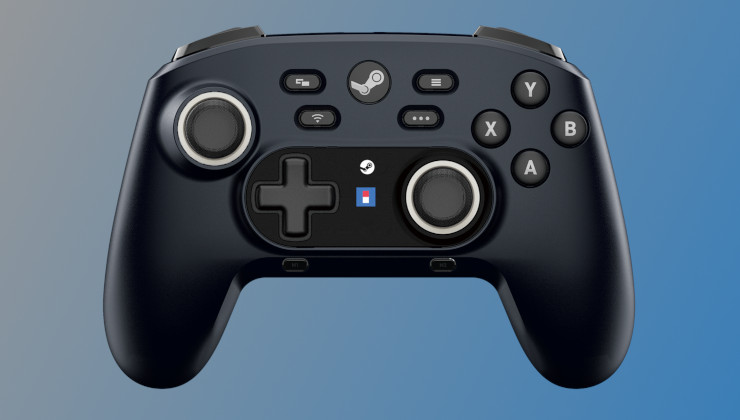Valve has today announced the brand new Steam Deck OLED model with some great sounding upgrades inside so here's the details.
This is the same basics as the original Steam Deck models but comes with an HDR OLED screen, a longer lasting 50Whr battery, faster WiFi, and a slew of tweaks and improvements across the board. Valve say the HDR OLED was "designed from the ground up for gaming", gives you "30-50% longer battery life", has WiFi 6E and gives improved thermals with a bigger fan while being 5% lighter than the original models. Oh, the OLED screen is also bigger at 7.4" (from 7.0") and goes up to 90Hz!
It will also come with a brand new carrying case for the 1TB models that has a removable liner, better touch-screen, easier repairs with Torx type screws that go into metal threads, so no messing up the structural integrity and Valve say the internal components are "now easier to access, and Steam Deck OLED replacement parts will be coming to iFixit soon". Even the APU was upgraded to 6nm for better efficiency, and the memory was updated to 6400 MT/s, improving latency and power management.
Not just that, you're also getting lower-priced models with the original LCD screen.
- Steam Deck 256GB LCD: Now $399 / £349 (effective immediately)
- Steam Deck 512GB OLED: $549 / £479
- Steam Deck 1TB OLED: $649 / £569
- Steam Deck 1TB OLED Limited Edition (translucent colorway): $679 (US/Canada only)
Steam Deck OLED will be available November 16th at 10 AM Pacific / 6PM UTC in USA, Canada, United Kingdom, and European Union, as well as Japan, South Korea, Taiwan, and Hong Kong via KOMODO.
However, the 64GB and 512GB LCD models are now being phased-out so they have a permanent discount until they are gone so while supplies last (prices effective immediately):
- Steam Deck 64GB LCD: Now $349 / £309
- Steam Deck 512GB LCD: Now $449 / £389

Direct Link
In their tech specs, it even mentions it has "support for wake from Bluetooth controllers", which I'm sure will be exciting to anyone who plans to regularly dock it.
The Docking Station is now priced at $79 / £69.
See more on the Steam Deck Store and the refreshed Steam Deck Website.
I do have a review unit on the way, which is supposed to arrive today. So stay tuned for my thoughts and comparisons on it. Exciting times to be a Linux gaming fan!
Quoting: shadow1w2I think it woulda been fair if they just waited till next year and announced it now so we could all plan for it and have a chance to resell our current ones before a price drop.
no way in hell they would do that, christimas is THE moment to sell something, like 50% of the sales of the entire year happens on christmass.
missing the opportunity to sell this right before christimas would make then lose a lot of money and give opportunity to the competition to react.
even worse is announcing something now to relase next year, that would mean losing their biggest oportunity to sell the current models.
i understand the frustration, but i dont expect an company to do something stupid like this, especially if this company is investing a lot into linux gaming.
Quoting: slaapliedjeQuoting: tuubiCRTs didn't either, except when you'd try to do foolish things like interlace. Well, or if you were someone not in the 60hz locations... While there are benefits of PAL, a higher refresh rate is not one of them, and there is definitely flicker to most people at 50hz vs 60hz.Quoting: slaapliedjeIt's kind of amusing to me that CRTs started off as 50/60hz, then higher end monitors started getting really high refresh rates (like the one I have that'll do 1600x1200 at 85hz). Then when we started with LCDs, we were back to having crappy refresh rates, with the added disadvantage of any non-native resolution looking like trash... Many years later, they're finally getting better.
You're forgetting or ignoring the fact that we mostly wanted higher refresh rates for CRTs to reduce the eye destroying flicker, not to make games run smoother or whatever. Whereas an LCD doesn't really have a flicker problem, even with the old fluorescent backlights.
There are definitely benefits and disadvantages to each tech. Older stuff though, was designed for a CRT, so on occasion can look like utter trash on an flat screen. Especially when you're looking at 8-16bit stuff.
speaking of it do you (or anyone) know if old games work fine on OLED ? i know they look like crap on CRT, but oled work different so it might look less crapy? i wonder if its harder to make shaders/filters to simulate an CRT on an OLED screen than on an LCD one.
Quoting: mattaraxiaI really don't get this reasoning, essentially being mad someone gets something newer.
That's not what I said. At all. But to make it clearer; I'm not mad in any way, and much less because someone can get something newer.
I only said that I was unhappy for the lack of opportunity to swap the old components for the new ones. That might be OK in the console world, but not in the PC industry.
I'm happy for those that can/want to afford the revision.
Quoting: slaapliedjeQuoting: F.UltraIt's kind of amusing to me that CRTs started off as 50/60hz, then higher end monitors started getting really high refresh rates (like the one I have that'll do 1600x1200 at 85hz). Then when we started with LCDs, we were back to having crappy refresh rates, with the added disadvantage of any non-native resolution looking like trash... Many years later, they're finally getting better.Quoting: PenglingQuoting: F.UltraWhere does the pain come from? I understand that OLED usually have higher brightness, but since that is a setting I guess that we are talking about something else?Eyestrain and migraines. I'm told that OLEDs flicker like CRTs did (I had the same problem with those - LCDs were a godsend!), which would both explain it and suggest that it can't be avoided.
Ah, was about to ask if you had the same issues with CRTs. Yes OLED:s "flicker" to control brightness so I can see why that might be an issue, probably different from model to model since the frequency of the flicker differs and once the frequency goes high enough I suspect that the issue should go away from sensitive people (the current issue is that the frequency is just above the detectable threshold and not way above, prob to save on power).
True, though the flkickering from OLED comes from a completely different frequency than the display frequency. However I'm just still amazed that we still since we moved on from a moving electron beam in a CRT to technology like LCD/LED/OLED where you can update any pixel at any time that we still have update frequencies. Monitors should basically by VRR as in the GPU sending "here is an image, and here is another" and only the capability of the monitor determinging the min time between such full frames.
Display frequencies have increased quite a lot though, I mean my OLED is 240hz and there exists 540hz in stores right now. And as others have already stated, the reason for the 85Hz CRT was to give a more stable image, not to handle high FPS in games.
Quoting: elmapulQuoting: slaapliedjeQuoting: tuubiCRTs didn't either, except when you'd try to do foolish things like interlace. Well, or if you were someone not in the 60hz locations... While there are benefits of PAL, a higher refresh rate is not one of them, and there is definitely flicker to most people at 50hz vs 60hz.Quoting: slaapliedjeIt's kind of amusing to me that CRTs started off as 50/60hz, then higher end monitors started getting really high refresh rates (like the one I have that'll do 1600x1200 at 85hz). Then when we started with LCDs, we were back to having crappy refresh rates, with the added disadvantage of any non-native resolution looking like trash... Many years later, they're finally getting better.
You're forgetting or ignoring the fact that we mostly wanted higher refresh rates for CRTs to reduce the eye destroying flicker, not to make games run smoother or whatever. Whereas an LCD doesn't really have a flicker problem, even with the old fluorescent backlights.
There are definitely benefits and disadvantages to each tech. Older stuff though, was designed for a CRT, so on occasion can look like utter trash on an flat screen. Especially when you're looking at 8-16bit stuff.
speaking of it do you (or anyone) know if old games work fine on OLED ? i know they look like crap on CRT, but oled work different so it might look less crapy? i wonder if its harder to make shaders/filters to simulate an CRT on an OLED screen than on an LCD one.
The thing is that those old games where created with the notion that the display was fuzzy and not sharp and detailed as they are now and an OLED is just as sharp and detailed as any LCD. What OLED brings to the table is CRT like (and in some cases like my monitor, better) handling of black and increased color+brightness capabilities.
Also one have to remember that back when we played those 8-bit and 16-bit games a 14" monitor was the default and the viewing distance was the same as it is with our modern 45" monitors so the size difference alone shows imperfections that were not detectable back then.
That said, I find C64 games using VICE looking quite good actually both on my OLED and on my old LCD.
Last edited by F.Ultra on 12 November 2023 at 4:49 pm UTC
Quoting: F.UltraThe thing is that those old games where created with the notion that the display was fuzzy and not sharp and detailed as they are now and an OLED is just as sharp and detailed as any LCD. What OLED brings to the table is CRT like (and in some cases like my monitor, better) handling of black and increased color+brightness capabilities.
well that's not strictly true. You personally may not perceive a softness to an image (and im sure on a small low res screen like the steam decks it might be even harder to tell) but there are many threads on OLED monitors (perhaps not so much on a large TV as you sit further back) that comment on the sub pixel layout of OLED and how for desktop use it is softer and much better for gaming than desktop productivity. And that this is something that is not likely to be fixed any time soon. Right now LCD is sharper.
Quoting: tuubiYou're forgetting or ignoring the fact that we mostly wanted higher refresh rates for CRTs to reduce the eye destroying flicker, not to make games run smoother or whatever. Whereas an LCD doesn't really have a flicker problem, even with the old fluorescent backlights.
true, but well there are monitors with PWM and that causes eye strain and flicker on both technologies you mentioned. thats the whole 'flicker free' thing you look out for when buying a new monitor.
Quoting: PenglingHowever, it doesn't change that fact that, for me personally, I simply can't look at these displays without pain! I really hope that LCD remains an option with the eventual Deck 2.
people may not be aware that the OLED's can actually flicker ( it may not be visible to the naked eye but i imagine there are some people sensitive to this) Some TV's push this flicker way out of band and it becomes a non issue, but on energy saving devices like a steam deck it 'Might' be an issue that creeps over time and makes your eyes tired even if you cannot perceive it.
I was watching a review and noticed the difference between Steam deck OLED and LCD straight away:
https://youtu.be/FspKHot0Ckk?t=382
Also OLED's dependent on manufacturer and firmware have large brightness fluctuations and usually an aggressive ABL ( auto brightness limiter ) which can dim the screen quite a lot. There's a recent review i watched where the screen will dim aggressively on steam deck OLED when looking at a bright object and its quite noticeable like those early cheap LCD TV's that didnt control the brightness properly on light to dark scenes. Mini LED does not do this for example (but it has its own issues)
So the OLED hype is partially justified but i would not write off LCD just yet.
OLED has:
lower lifespan
visible ABL dimming
Softer image
high power draw requiring a heatsink / fan on TV's / Monitors
dependent on display manufacturer/firmware there can be issues around color banding
its not perfect but for Black level and response time its obviously amazing. The reason there is more color saturation here is more likely down to the fact the original deck screen was not the greatest. That said in terms of response time, the occulus VR headset has a response time as fast as a CRT and that is an LCD display. So it all really depends on the model and how it is setup.
no screen technology is perfect. Id like to see a better quality tuned micro-led display as an option for future, perhaps with a 1200p resolution. leaving the option for LCD or OLED as a choice.
Last edited by Lofty on 12 November 2023 at 6:59 pm UTC
Quoting: LoftyQuoting: F.UltraThe thing is that those old games where created with the notion that the display was fuzzy and not sharp and detailed as they are now and an OLED is just as sharp and detailed as any LCD. What OLED brings to the table is CRT like (and in some cases like my monitor, better) handling of black and increased color+brightness capabilities.
well that's not strictly true. You personally may not perceive a softness to an image (and im sure on a small low res screen like the steam decks it might be even harder to tell) but there are many threads on OLED monitors (perhaps not so much on a large TV as you sit further back) that comment on the sub pixel layout of OLED and how for desktop use it is softer and much better for gaming than desktop productivity. And that this is something that is not likely to be fixed any time soon. Right now LCD is sharper.
Yes I have seen lots of such claims, especially from people online vomiting over my LG 45GR95QE-B since it's both a WOLED and 45" UW 1440p and thus have a DPI that is just slightly above that of a 27" 1080p but to me this is mostly BS. At work I have a high end 32" 4K LCD from Samsung and it is by all means not that much sharper than my OLED at home.
Online people claim that it is impossible to work with text on my monitor while I as a programmer do tons of work with text (and often in terminal windows) with zero issues. If this means that they are all wrong or that Gnome happens to be better at text on this sub pixel layout than Windows is I don't know since I don't run Windows but text and/or sharpness is a complete non issue.
Plus to get back to context, even if that would be true it would be nothing compared with the fuzziness that existed even on the really high end CRT:s (and I used seriously high end CRT:s at work back before LCD:s took over) due to their analogue nature (#1 the signal was analogue and #2 the ray painting the image can not hit the exact same spot with infinite precision). Combine that with the low resolution of 8-bit monitors of 320x200 / 320x160 depending on PAL/NTSC fed over analogue composite.
* lower lifespan was an issue before 2016 as already discussed, the OLED panels since then have 2x the lifespan of a LCD one
* fans are a problem on some models, mine not at all, completely silent
* visible ABL, can be an issue the few times it hits but IMHO beats the bleed from LCD:s backlight every single day of the week.
Last edited by F.Ultra on 13 November 2023 at 12:16 am UTC
Quoting: F.UltraQuoting: LoftyQuoting: F.UltraThe thing is that those old games where created with the notion that the display was fuzzy and not sharp and detailed as they are now and an OLED is just as sharp and detailed as any LCD. What OLED brings to the table is CRT like (and in some cases like my monitor, better) handling of black and increased color+brightness capabilities.
well that's not strictly true. You personally may not perceive a softness to an image (and im sure on a small low res screen like the steam decks it might be even harder to tell) but there are many threads on OLED monitors (perhaps not so much on a large TV as you sit further back) that comment on the sub pixel layout of OLED and how for desktop use it is softer and much better for gaming than desktop productivity. And that this is something that is not likely to be fixed any time soon. Right now LCD is sharper.
Yes I have seen lots of such claims, especially from people online vomiting over my LG 45GR95QE-B since it's both a WOLED and 45" UW 1440p and thus have a DPI that is just slightly above that of a 27" 1080p but to me this is mostly BS. At work I have a high end 32" 4K LCD from Samsung and it is by all means not that much sharper than my OLED at home.
Online people claim that it is impossible to work with text on my monitor while I as a programmer do tons of work with text (and often in terminal windows) with zero issues. If this means that they are all wrong or that Gnome happens to be better at text on this sub pixel layout than Windows is I don't know since I don't run Windows but text and/or sharpness is a complete non issue.
Plus to get back to context, even if that would be true it would be nothing compared with the fuzziness that existed even on the really high end CRT:s (and I used seriously high end CRT:s at work back before LCD:s took over) due to their analogue nature (#1 the signal was analogue and #2 the ray painting the image can not hit the exact same spot with infinite precision). Combine that with the low resolution of 8-bit monitors of 320x200 / 320x160 depending on PAL/NTSC fed over analogue composite.
Gnome does seem to handle font's a bit better im my experience. One of my screens is a 24.5" 1080p screen running Gnome wayland and it looks okay at a suitable distance, but it's the lowest PPI i could possibly handle. I assume you sit further back with it being a giant 45" screen. Also it seems that the 45GR95QE-B does not flicker like the steam deck, seen as i have already looked previously at reviews of the LG and have seen no issues (id actually like a 5k version of that screen)
everyone has their acceptable preferences with regards to clarity,some people have returned OLED because they for some reason don't like it's color presentation. But i wouldn't assume that they are all wrong across the many forums mostly they base their experiences on other OLED's at 27" to 34" with a 109ppi vs your smaller 83ppi. Although, how many people actually own these screens vs theoretically disliking i cannot tell. On balance there is an issue, but not everyone is sensitive to it.
Quoting: F.Ultralower lifespan was an issue before 2016 as already discussed, the OLED panels since then have 2x the lifespan of a LCD one
I must of missed that bit of the discussion. OLED burn in is still a thing. its one of the reasons i believe the pricing has been so surprisingly competitive with mini-LED panels. Where is the study that shows OLED to last twice the length of an LCD screen ? I have LCD screens from 2012 with 10's of thousands of hours on working just fine like the day i bought it.
Quoting: F.Ultravisible ABL, can be an issue the few times it hits but IMHO beats the bleed from LCD:s backlight every single day of the week.
ABL still looks weird to me, personally i prefer a more consistent visual experience. i don't have backlight bleed on any of my LCD monitors. Im not disputing the pure black of OLED of course. it's just my screens are black enough for my tastes.
Quoting: F.Ultra* fans are a problem on some models, mine not at all, completely silent
So your screen has a fan ? I don't want a monitor that needs a fan TBH.
The power consumption on OLED is higher than LCD. which may or may not bother the end user. But i like to keep my energy bill & heat in room as low as possible. Like i said each technology has its strengths and weaknesses.
Last edited by Lofty on 13 November 2023 at 12:42 am UTC
Quoting: elmapulApparently the MiSTer now has some HDR support for doing cool things to bring back that CRT look (scanlines and such). I haven't tested mine out on my OLED TV yet though.Quoting: slaapliedjeQuoting: tuubiCRTs didn't either, except when you'd try to do foolish things like interlace. Well, or if you were someone not in the 60hz locations... While there are benefits of PAL, a higher refresh rate is not one of them, and there is definitely flicker to most people at 50hz vs 60hz.Quoting: slaapliedjeIt's kind of amusing to me that CRTs started off as 50/60hz, then higher end monitors started getting really high refresh rates (like the one I have that'll do 1600x1200 at 85hz). Then when we started with LCDs, we were back to having crappy refresh rates, with the added disadvantage of any non-native resolution looking like trash... Many years later, they're finally getting better.
You're forgetting or ignoring the fact that we mostly wanted higher refresh rates for CRTs to reduce the eye destroying flicker, not to make games run smoother or whatever. Whereas an LCD doesn't really have a flicker problem, even with the old fluorescent backlights.
There are definitely benefits and disadvantages to each tech. Older stuff though, was designed for a CRT, so on occasion can look like utter trash on an flat screen. Especially when you're looking at 8-16bit stuff.
speaking of it do you (or anyone) know if old games work fine on OLED ? i know they look like crap on CRT, but oled work different so it might look less crapy? i wonder if its harder to make shaders/filters to simulate an CRT on an OLED screen than on an LCD one.
Quoting: F.UltraInterestingly, I currently have my A4000 connected to an LCD monitor (via a zz9000, which has an HDMI output, but a pass through for native resolutions), plus a Commodore 1084 monitor (CRT). Watching a demo, I could see a square blue area around the main part of the demo running on the LCD screen, whereas on the CRT, it was very dark and you couldn't see it, making it look much better.Quoting: elmapulQuoting: slaapliedjeQuoting: tuubiCRTs didn't either, except when you'd try to do foolish things like interlace. Well, or if you were someone not in the 60hz locations... While there are benefits of PAL, a higher refresh rate is not one of them, and there is definitely flicker to most people at 50hz vs 60hz.Quoting: slaapliedjeIt's kind of amusing to me that CRTs started off as 50/60hz, then higher end monitors started getting really high refresh rates (like the one I have that'll do 1600x1200 at 85hz). Then when we started with LCDs, we were back to having crappy refresh rates, with the added disadvantage of any non-native resolution looking like trash... Many years later, they're finally getting better.
You're forgetting or ignoring the fact that we mostly wanted higher refresh rates for CRTs to reduce the eye destroying flicker, not to make games run smoother or whatever. Whereas an LCD doesn't really have a flicker problem, even with the old fluorescent backlights.
There are definitely benefits and disadvantages to each tech. Older stuff though, was designed for a CRT, so on occasion can look like utter trash on an flat screen. Especially when you're looking at 8-16bit stuff.
speaking of it do you (or anyone) know if old games work fine on OLED ? i know they look like crap on CRT, but oled work different so it might look less crapy? i wonder if its harder to make shaders/filters to simulate an CRT on an OLED screen than on an LCD one.
The thing is that those old games where created with the notion that the display was fuzzy and not sharp and detailed as they are now and an OLED is just as sharp and detailed as any LCD. What OLED brings to the table is CRT like (and in some cases like my monitor, better) handling of black and increased color+brightness capabilities.
Also one have to remember that back when we played those 8-bit and 16-bit games a 14" monitor was the default and the viewing distance was the same as it is with our modern 45" monitors so the size difference alone shows imperfections that were not detectable back then.
That said, I find C64 games using VICE looking quite good actually both on my OLED and on my old LCD.
A lot of the old pixel art and such, just looks better with scanlines, which is why most emulators try their damnedest to recreate such things with shaders, etc. Ha, in a lot of ways, the computations to do just the shaders are more powerful than what it the original platforms were...
For the record, my Atari Jaguar does actually look quite amazing on my 77" OLED through an OSSC...







See more from me